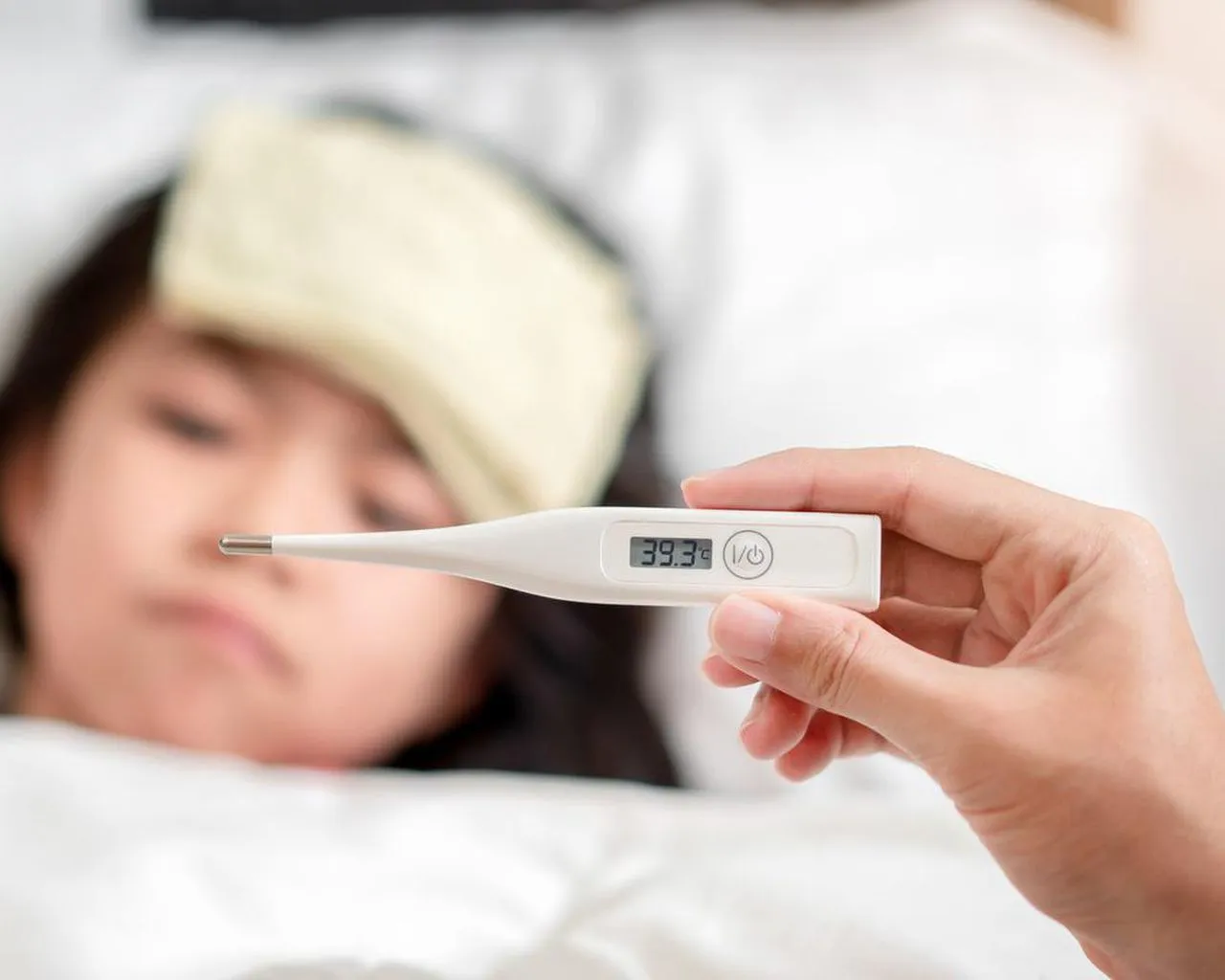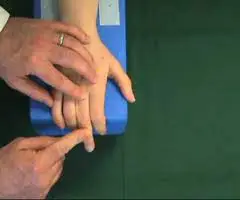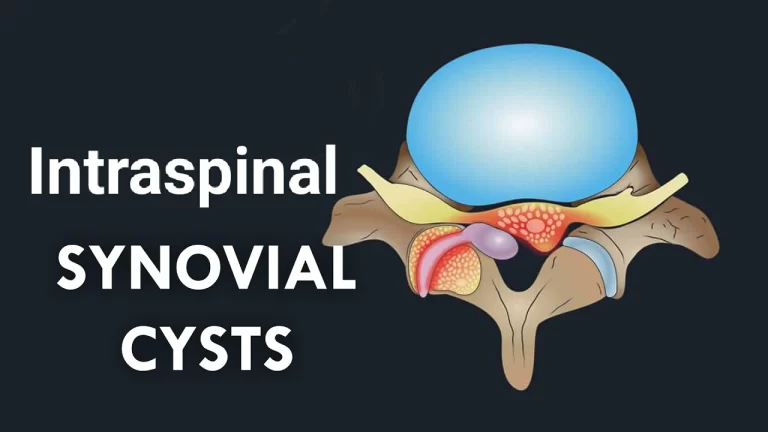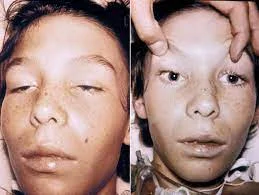Fever
When your body temperature increases over normal, you have a fever. Fever by itself is not a disease. Instead, it’s a sign of a variety of medical issues. A slight increase in body temperature can indicate that your immune system has been activated, usually to fight infection. Additionally, several drugs and immunizations may cause it as a side effect.
An abrupt increase in body temperature is a defining feature of a fever. It is a component of the overall immune system’s reaction. Fever typically represents a symptom of infection.
If a person’s body temperature increases above the typical range of 98-100°F (36-37°C), they are said to have a fever. It frequently indicates an infection.
Almost all kids and adults detest having a fever. It usually is not a cause for worry though. However, even a low body temperature in a baby could be an indication of a serious infection.
A person may experience coldness when their body temperature rises until it levels off and stops rising. People claim that this gives them “chills.”
Temperature can also be impacted by eating, exercising, sleeping, the time of day, and individual characteristics.
When an infection occurs, the immune system will launch an attack to try to get rid of the cause. An increase in body temperature is a typical side effect of this reaction.
Usually, a fever goes away on its own. A severe infection that requires medical attention could, however, be indicated by an excessive increase in body temperature.
Fever usually goes away after a few days. Fever is reduced by many over-the-counter medications. However, if a fever is not unpleasant, it should not be treated.
Table of Contents
What is considered a fever?
A “normal” body temperature is generally accepted to be 98.6 degrees Fahrenheit (37 degrees Celsius). Your normal body temperature, however, may vary by one degree or more. It likewise changes. It usually drops in the morning and rises at night. It’s higher when you exercise and at specific times during your menstrual cycle.
Normal body temperatures for infants and early children are a little bit higher than those for older children and adults. Therefore, fever temperatures are a little higher in newborns and young children.
Since body temperature varies depending on the individual, the time of day, and the measurement technique, there are no set rules for what temperature constitutes a fever. However, when tested orally (by mouth), healthcare professionals most frequently state that a fever temperature is 100.4 degrees F (38 degrees C).
When compared to skin thermometers, such as forehead thermometers, oral thermometers typically measure temperatures at a level that is around 1.0 degrees F (0.6 degrees C) higher. Oral thermometers typically measure temperatures at around 1.0 degrees F (0.6 degrees C) higher than skin thermometers, such as forehead thermometers.
Fever is a brief rise in body temperature brought on by a sickness or illness.
A child gets a fever if their temperature is at or above one of these levels:
- The bottom was recorded at 100.4°F (38°C) (rectally).
- Oral temperature measurement: 99.5°F (37.5°C)
- Measured under the arm (axillary) at 99°F (37.2°C).
- Depending on the time of day, a temperature above 99°F to 99.5°F (37.2°C to 37.5°C) indicates that an adult most likely has a fever.
Alternative Names: Hyperthermia, Pyrexia, and Elevated Temperature
Considerations:
The average body temperature might change at any time of day. It is frequently at its peak in the evening. The following factors may also affect body temperature:
- The menstrual cycle of a woman. She may experience an increase in temperature of at least one degree in the second phase of this cycle.
- Body temperature can rise as a result of physical exertion, intense emotion, eating, wearing heavy clothing or medications, as well as from high indoor temperatures and high humidity.
- Fever is a vital part of the body’s defense against illness. The optimal temperature for the majority of bacteria and viruses that infect humans is 98.6°F (37°C).
- With common viral diseases, infants and children frequently experience high fevers. Although a fever suggests that there may be a conflict taking place inside the body, the fever is fighting for the person, not against them.
A fever normally won’t cause brain damage unless it rises above 107.6°F (42°C). Infection-related fevers rarely exceed 105°F (40.6°C) without treatment, unless the youngster is overdressed or in a heated environment.
Some kids do experience febrile seizures. Most febrile seizures are brief, and they don’t necessarily mean your child has epilepsy. Furthermore, there is no long-term impact from these seizures.
Fevers of unidentified origin (FUO) are unexplained fevers that last for days or weeks.
Causes of Fever
There are numerous illnesses that might generate a fever, which can indicate any one of them. Common conditions that cause fever include:
- Bacterial infections.
- Cellulitis, osteomyelitis, cellulitis of the appendix, skin infections, and meningitis
- Viral infections such as influenza or COVID-19.
- The common cold, flu, sore throats, ear infections, sinus infections, mononucleosis, bronchitis, pneumonia, and tuberculosis are examples of respiratory illnesses.
- Gastrointestinal (GI) infections.
- Urinary tract infections.
- Skin infections.
Following some vaccinations, children and adults may experience a low-grade fever for one or two days.
A child’s temperature may slightly rise due to teething, but it shouldn’t go above 100°F (37.8°C).
You might also get a fever as a result of:
- A reaction to certain medications: A few antibiotics, antihistamines, and seizure medications are among the medications.
- Vaccinations.
- Autoimmune disorders.
- Cancer.
- Blood clots or thrombophlebitis
Autoimmune or inflammatory disorders may also cause fevers. Some examples are:
- The connective tissue disorders systemic lupus erythematosus and rheumatoid arthritis are two instances of how they can cause arthritis.
- Ulcerative colitis and Crohn’s disease
- Vasculitis or periarteritis nodosa
- Fever is sometimes the first sign of malignancy. Leukemia, non-Hodgkin lymphoma, and Hodgkin disease are examples of this in specific.
In addition to having a fever, a person may also:
- Feel cold and shiver when no one else does
- Sweat
- Have a low appetite
- Show signs of dehydration
- Have increased sensitivity to pain
- Lack energy and feel sleepy
- Have difficulty concentrating
When a child gets a fever, they might:
- Feel hot to the touch
- Have flushed cheeks
- Be sweaty or clammy
- In addition to irritation and confusion, high fevers can also cause delirium and convulsions.
Symptoms of Fever
Each person’s body temperature varies slightly throughout the day. The average temperature is typically defined as 98.6 F (37 C). Any oral temperature measured with a mouth thermometer that is 100 F (37.8 C) or higher is often regarded as a fever.
Depending on the reason, additional signs and symptoms of a fever may include:
- Sweating
- Chills and shivering
- Headache
- Muscle aches
- Loss of appetite
- Irritability
- Dehydration
- General weakness
- Shaking.
- Body aches
- Fatigue (tiredness).
- On and off or constant sweating.
- Flushed complexion or hot skin.
- Faster heartbeats.
- Feeling cold
Other fever signs in infants and young children include:
- Being unwilling to eat or drink enough.
- Earache or pulling at their ears.
- High-pitched crying.
- Fussiness.
- Paleness or flushness.
- Excessive thirst.
- Decreased urination.
Diagnosis:
- Using a thermometer to take your temperature is the most accurate approach to identify a fever. There are various kinds of thermometers, including the ones listed below:
- (Oral, rectal, or under the armpit) Digital thermometer
- Tympanic (ear) thermometer (not advised for infants under 6 months
- Temporal artery temperature (measured in the region of the forehead)
- Particularly if the child is younger than three years old, using the thermometer directly is the most precise method.
- Use the thermometer in the mouth or under the armpit in adults and older children to measure the temperature. The ideal approach to take your temperature should be discussed with your healthcare professional.
The majority of thermometers on the market now are digital, however, some mercury-filled glass thermometers are still in use. Mercury is a poisonous element that is harmful to both people and the environment. Glass thermometers should be disposed of appropriately in compliance with all applicable municipal, state, and federal legislation since they can break. Get in touch with your neighborhood fire department, garbage disposal company, or health agency for instructions on how to properly dispose of a mercury thermometer.
How to Take a Temperature:
The kind of thermometer used could have an impact.
- Utilize a digital thermometer to take your temperature. Mercury thermometers must not be used.
- The most precise thermometers are found in the baby’s rectus (bottom).
- The next best choice, when used correctly, are forehead (temporal artery) thermometers.
- If done correctly, using ear (tympanic) and oral (mouth) thermometers is possible. After drinking something hot or cold, wait 30 minutes before taking your oral temperatures. After coming in from the cold, wait 15 minutes before applying ear.
- Finally, although it can be used as a rapid check, taking the temperature in the armpit is not very accurate.
Depending on your child’s age, there are various methods for taking their temperature:
- Rectal or forehead thermometers for children under 3
- Rectal, forehead, or axillary thermometers for children older than 4 months.
- Rectal, forehead, ear, or axillary thermometers for people older than 6 months.
- Oral (mouth), forehead, ear, or axillary thermometers for people above the age of four
Tell the medical professional who is caring for your child what approach you utilized.
Complications:
Children between the ages of 6 months and 5 years are more likely to experience a febrile seizure, which is a seizure that happens while a person has a fever. One-third of kids who experience one febrile seizure go on to experience another, usually within the year after the first one.
A febrile seizure may present with body rigidity, rolling eyes, unconsciousness, and limb tremor on both sides of the body. The vast majority of febrile seizures have no long-term consequences, despite being concerning for parents.
When a seizure happens:
- A child should be placed on the floor or ground with their stomach or other side up.
- Take away any sharp objects from your child’s vicinity.
- Taking off tight garments
- Hold your youngster to avoid harm.
- Never put anything in your child’s mouth to try to stop a seizure.
- If a seizure lasts longer than five minutes or your child doesn’t seem to be recovering well after the seizure, call 911 or your local emergency number.
- If your child is experiencing their first febrile seizure, take them to the emergency room or urgent care.
- Visit your child’s doctor as soon as you can for a more thorough assessment if they don’t require emergency care.
How to Prevent Fever?
By limiting their exposure to infectious pathogens, a person may be able to avoid getting fevers. The following advice may be helpful:
- Get the necessary vaccinations against infectious diseases including COVID-19 and influenza.
- Follow the public health advice regarding the use of masks and social isolation.
- Wash your hands frequently, and encourage your kids to do the same, especially before eating, just after using the restroom, after being around a lot of people or sick people, right after petting animals, and while using public transportation.
- Show your kids the proper way to wash their hands: using soap on the front and back of each hand, then completely rinsing under running water.
- In situations where you don’t have access to soap and water, keep hand sanitizer on hand.
- Avoid touching your lips, nose, or eyes because these are the main entry points for bacteria and viruses that can infect you.
- When you cough or sneeze, cover your mouth, and show your kids how to do the same. When possible, turn away from people and cough or sneeze into your elbow to prevent the spread of germs.
- Keep your youngster or children from sharing utensils, water bottles, or cups.
Treatment of Fever
The immune system’s response to bacteria, viruses, and other pathogens includes a slight fever. It supports the body in warding off illness.
However, it can be painful, and a fever might occasionally cause problems.
To reduce a person’s temperature for this reason, doctors occasionally advise using drugs called antipyretics.
Nonsteroidal anti-inflammatory medicines (NSAIDs), such as ibuprofen, are examples. Additionally, acetaminophen (Tylenol) helps lower a fever. Although aspirin can be helpful, it should not be given to youngsters or those who are on blood thinners.
Tylenol and NSAIDs can be bought over the counter or online.
A person may become dehydrated if they are perspiring a lot. In this situation, people should drink lots of fluids to avoid problems.
Treating the cause:
Fever is a symptom, not a disease.
To find the cause, a doctor might want to do some tests. They might suggest an antibiotic if a bacterial infection is the cause of the fever.
The cause of the fever will determine the best course of treatment. Antibiotics would be administered for a bacterial infection, such as strep throat.
The most popular treatments for fever are over-the-counter drugs like acetaminophen and nonsteroidal anti-inflammatory drugs like ibuprofen and naproxen. Because aspirin has been associated with Reye’s syndrome, it shouldn’t be administered to children or adolescents.
The doctor could advise taking NSAIDs if the cause is a viral illness to lessen the symptoms.
A virus cannot be stopped by antibiotics. They won’t be prescribed by a doctor for a viral infection.
If the fever is brought on by prolonged, vigorous exercise or hot weather, NSAIDs won’t be of any assistance. It is crucial in these situations to calm the person down. They require emergency medical attention if they are disoriented or unconscious.
Ensure your comfort by:
- Consuming a lot of clear liquids, including water, broth, juices, or a rehydration drink.
- Bathing in a heated bath.
- Resting.
- Wearing lightweight clothing and bed linens will help you stay cool.
Home Treatment:
If your child doesn’t feel uncomfortable, a fever might not need to be treated. In most cases, even greater temperatures are not harmful unless a person has a chronic condition.
- Your child should wear light clothing. If they are overdressed, their body heat could be trapped and cause them to become hotter.
- Under 1 year old infants: Wrap them in a sleep sack or wearable blanket. Avoid covering them with thin blankets.
- Children older than 1: Give them a sheet or thin blanket to sleep with.
- Give more liquids.
- Infants under one year old should continue to receive formula and breast milk. You shouldn’t offer them water. Pedialyte® may be given if the person is older than six months.
- Give older children extra liquids to drink, such as water, 100% juice diluted with juice, popsicles, or Pedialyte.
- It’s possible that your kid won’t eat much. Offer soft foods frequently and in moderation, but don’t make them eat. Bathing an infant with a sponge
- Allow your child to soak in the tub or give them sponge baths. Water should be lukewarm, not boiling or freezing, for best results. Use a washcloth to sponge the water over your child’s body.
- Never include alcohol in the water. It might be hazardous.
- 15 minutes after the bath, check your child’s temperature once more. Repeat the sponge bath if the temperature is 103 °F (39.4 °C) or is rising.
- Fever reduction medications are available over-the-counter. Read the bottle’s label to find the right dosage for your child.
- give children no aspirinAll children older than two months old can take acetaminophen (Tylenol®).
- Children older than six months may use ibuprofen (Advil®, Motrin®).
- Give children NO aspirin. Aspirin has been connected to the potentially fatal condition of Reye’s syndrome.
When to Contact a Healthcare Professional
In the event that your kid experiences any of the following:
- Child is less than three months old and has a temperature of at least 100.4 °F (38 °C).
- Child is older than three months and has a temperature of at least 104 °F (40 °C).
- 102°F (38.9°C) or higher for more than two days or continues returning.
- It has been attempted to cure it to bring it down, but it has failed.
- Develops a fever at any age and:
- Extremely grouchy, sleepy, or ill-looking.
- Demonstrates signs of dehydration such as a dry or sticky mouth, sunken eyes, dark urine, dry diapers, or not peeing when not eating or drinking.
- Experiencing nausea, vomiting, diarrhea, a stiff neck, a strong headache, a very sore throat, or any of these symptoms.
- Has a peculiar rash
- Has been in a hot environment, such as a hot automobile.
- Has immune system issues, such as cancer or sickle cell disease, which increase their risk of getting sick, or uses an immune system-weakening medication.
Summary:
In conclusion, a fever is typically an indication of an infection. While it usually doesn’t cause any issues, the underlying illness may need to be treated medically.
Frequent self-resolving of fever occurs without the need for medical attention. However, if a kid or an older person develops a fever, if they have other serious symptoms that are getting worse, or if they have a compromised immune system, they should get medical attention.
FAQs:
What are the four types of fevers?
Variety Of Fever
When the body temperature reaches 100.4 °F (38 °C), a low-grade fever develops.
If the temperature exceeds 102.2–104°F, or 39.1–40°C, a moderate fever is present.
The term “high-grade fever” refers to a body temperature of 104 F (39.4 C) or above.
If the temperature rises above 106°F (41.1°C), hyperpyrexia results.Is fever a disease or a symptom?
A temperature is not a sign of illness. Usually, it is an indication that your body is attempting to fight off an infection or illness. Most fevers are caused by infections. When you have a fever, your body makes an effort to combat the virus or bacteria that caused the condition.
What causes a high fever?
The majority of illnesses and infections that cause fevers. The bacteria and viruses that cause infections have a harder time surviving because of the high body temperature.
What is the best medicine for a fever?
A healthcare practitioner might advise over-the-counter medications like acetaminophen (Tylenol, among others) or ibuprofen (Advil, Motrin IB, among others) if your temperature is high or uncomfortable. Use these medications as directed on the label or by your healthcare provider’s advice.
What is the range of a fever?
Depending on the time of day, a temperature above 99°F to 99.5°F (37.2°C to 37.5°C) indicates that an adult most likely has a fever.








18 Comments